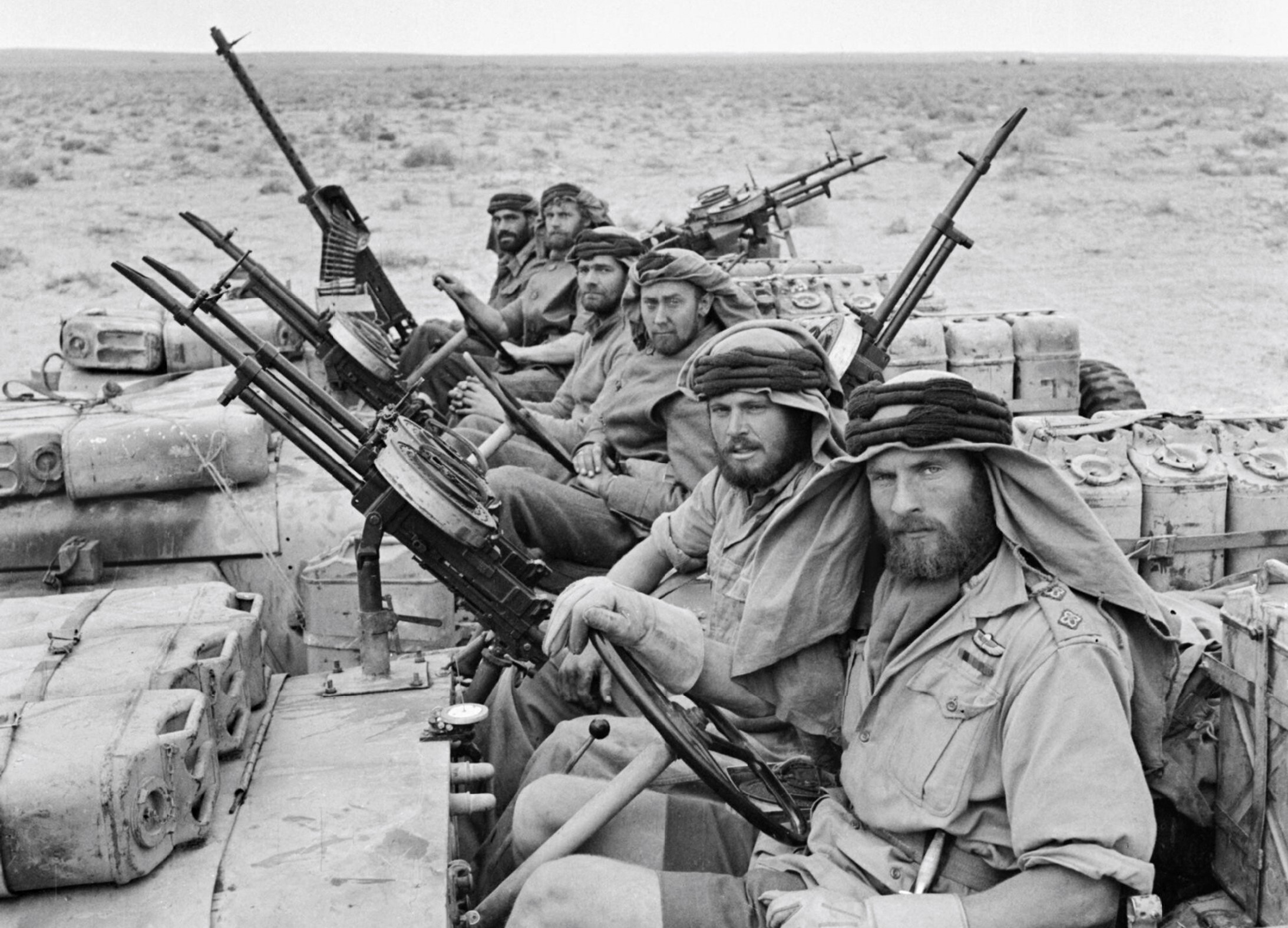SAS patrol in North Africa during WWII (1943). Photo: Keating (Capt) No 1 Army Film & Photographic Unit – This photograph E 21337 comes from the collections of the Imperial War Museums (collection no. 4700-32). Cropped Image.
Who Dares Wins” — Motto of the SAS
David Stirling (Archibald David Stirling) is the name that has become synonymous with the World War II Special Air Service (SAS) but the real brain behind its operation is a name that you may not of heard of David’s eldest brother Bill Stirling. Bill has been described as a “man from the shadows” due to his preference for staying out of the spotlight.
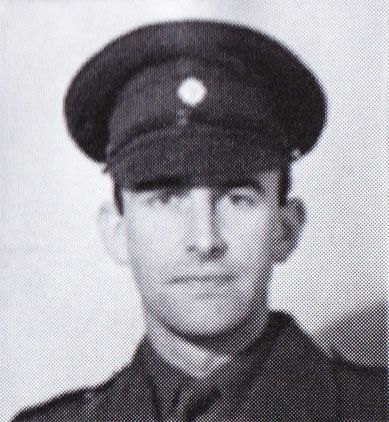
William Joseph “Bill” Stirling was born in his family’s ancestral home, Keir House, in the parish of Lecropt, Perthshire, Scottland on 9 May 1911. His family had a long military tradition. His father was Brigadier-General Archibald Stirling, who served in the Boer War and World War I, and his mother was Margaret Fraser, the daughter of Lord Lovat Simon. He was educated at Ampleforth College, a Catholic boarding school, and Trinity College, Cambridge, where he studied history. He joined the Scots Guards in 1937 and served in Palestine before World War II broke out.
Formation of the SAS
Archibald David Stirling was born on 15 November 1915 in Keir House, Perthshire, Scotland. He went to school at Ampleforth College, and Trinity College, Cambridge, where he studied for a year before moving to Paris to become an artist. He was also an avid mountaineer and was training to climb Mount Everest when the war broke out.
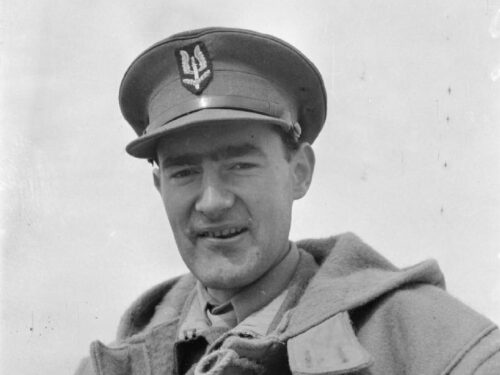
Like his brother, David was also a Scots Guards officer, but he transferred to the Commandos after being injured in a parachuting accident. David conceived the idea of forming a small unit of raiders who would operate deep behind enemy lines, using parachutes or jeeps to infiltrate and exfiltrate. He persuaded General Auchinleck, the commander-in-chief of the Middle East, to approve his plan and formed L Detachment of the SAS Brigade in July 1941 to conduct raids in North Africa. L Detachment, Special Air Service Brigade. This was a cover name that was aimed at deceiving the Germans. It was renamed as the 1st SAS Regiment in September 1942, when it expanded. The name changes reflected changes in its role, size, and recognition within the British military structure.
David Stirling was captured by the Germans in Tunisia in 1943, after being betrayed by the Arabs. He made several escape attempts but was recaptured by the Germans. He ended the war as a POW in Germany’s infamous “escape-proof” Colditz Castle.
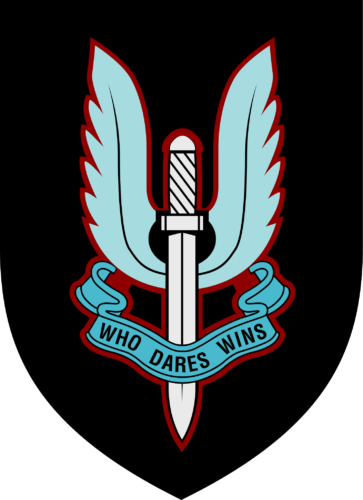
Bill Stirling joined the Small-Scale Raiding Force (SSRF) or No. 62 Commando in 1942, where he soon proved his worth as both a leader and planner. It consisted of a few commandos who worked under the Special Operations Executive (SOE), an organization that conducted covert operations behind enemy lines. He formed the 2nd SAS Regiment in October 1943 from volunteers and members of the SRRF.
The 2nd SAS operated mainly in Italy, France, Belgium, the Netherlands and Germany, conducting raids, sabotage, reconnaissance and intelligence missions behind enemy lines. It was also involved in supporting the Allied advance across Europe, liberating prisoners of war, capturing high-ranking Nazi officials and rescuing Allied aircrews.
Bill admired his brother’s initiative and courage, but he also saw the flaws in his methods and organization. David was charismatic and daring, but he was also reckless and impulsive. He often neglected planning, logistics and security, which led to many casualties and failures. Bill was more careful and meticulous, with a keen sense of strategy and intelligence.
During the war, Bill took part in several successful operations, such as Operation Bigamy (a raid on two airfields in Libya), Operation Speedwell (a sabotage campaign against rail targets in Genoa, Italy) and Operation Tombola (the most daring raid of his career). He also developed a close relationship with the Italian partisans, who provided him with valuable information and support.
Operation Tombola was a major raid conducted by the British 2nd Special Air Service and the SOE during World War II. The objective of Operation Tombola was to take out German command post housed in two villas in Botteghe d’Albinea, a hilly area above Reggio Emilia. The German command post was suspected to belong to the 14th Army, but it might have been the LI Mountain Corps. The operation was launched prematurely on 27 March 1945, against the orders of the Allied 15th Army Group, who wanted to coordinate it with a larger offensive. The raid was led by Major Roy Farran and Captain Michael Lees, who had the support of Italian partisans and escaped Russian POWs. The attack was successful, inflicting 50-60 casualties on the Germans and disrupting their communications.

In January 1944, Bill became the commanding officer of the 2nd SAS Regiment. He led his men in France, where they operated alongside the French Resistance and other Allied special forces. They carried out numerous missions to harass, confuse and weaken the German forces, such as cutting railway lines, blowing up bridges, ambushing convoys, capturing prisoners and gathering intelligence. They also helped to prepare the ground for the Allied invasion of Normandy by marking drop zones and landing sites for paratroopers and gliders.
Personal Life
Bill Stirling’s personal life was less adventurous than his military one. He married Anne Hornby in 1940 and they had four children: David, Margaret, John and James. His brother David married twice: first to Diana Duff (with whom he had three children: Angus, Fergus and Shimi) and second to Deborah Mitford (with whom he had no children). The brothers remained close throughout their lives, despite their different personalities and careers.
After the war, Bill continued to serve in the army until 1968, when he retired as a brigadier. He also wrote a book about his experiences in the SAS, titled The Phantom Major. He passed away in March 1983in Westminster, London, England at the age of 71.
David Stirling left the army in 1946 and became involved in various business ventures, such as founding a private security company and developing tourism in Africa. He retired from the military as a colonel. He received the Distinguished Service Order for his gallant service during the war. He was also appointed an Officer of the Order of the British Empire. He passed way in November 1990 in London after being was knighted for his outstanding service to his country.
Sir David is widely regarded as one of the pioneers of modern unconventional warfare and a visionary leader who inspired his men with his courage and charisma. His legacy lives on in the SAS and other elite units around the world that follow his principles of speed, surprise, and violence of action.
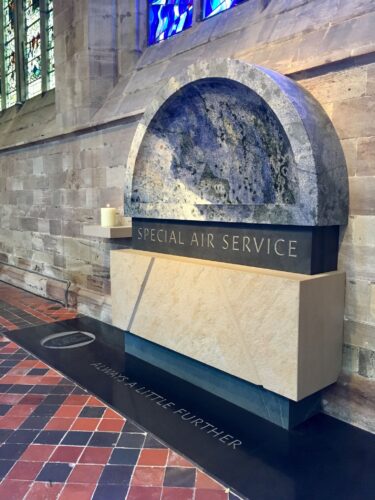
The SAS Today
The original SAS, which was formed during World War II, was disbanded on 8 October1945. An independent strategic reconnaissance and surveillance capability was restored in 1947 with the creation of the 21 SAS Regiment. The SAS was reconstituted as a corps in 1950.
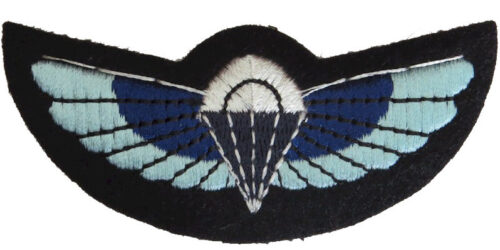
The SAS specializes in a number of roles including counterterrorism, hostage rescue, direct action and covert reconnaissance. The SAS is highly secretive and does not comment on its operations or organization. The SAS presently consists of three regiments: 22 SAS (the regular component), 21 SAS (the reserve component) and 23 SAS (the reserve component).
The SAS is part of United Kingdom Special Forces (UKSF), which also includes the Special Boat Service (SBS), the Special Reconnaissance Regiment (SRR) and the Special Forces Support Group (SFSG). The SAS has taken part in most of the United Kingdom’s wars since World War II, as well as many other conflicts around the world.
*The views and opinions expressed on this website are solely those of the original authors and contributors. These views and opinions do not necessarily represent those of Spotter Up Magazine, the administrative staff, and/or any/all contributors to this site.
